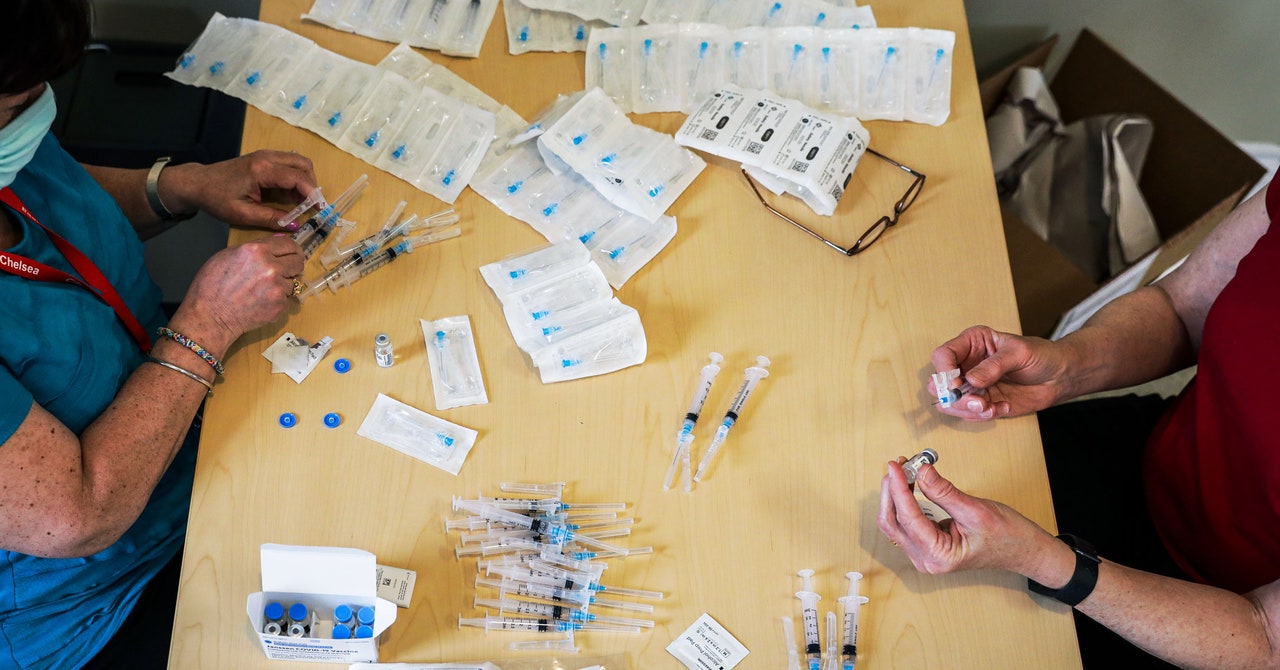
The public health world was ready for something like this. They just didn’t know what the something would be. “When these vaccines kicked off to the world’s population, to billions of people, we knew there would be unanticipated side effects,” says Eric Topol, director of the Scripps Research Translational Institute. “These are so rare—the Johnson & Johnson one is one in a million, the AstraZeneca is one in a hundred thousand, ballpark. That’s pretty good. It doesn’t provide any solace to the one, but it should provide lots of solace to the many.”
Still, it won’t be easy to get that message across, especially when the numbers don’t yet tell the whole story. Regulators and vaccine researchers are still waiting for the most basic information about the mechanism behind the clots, the subpopulations that might be most vulnerable, and the real frequency of these dangerous clots.
The J&J and AstraZeneca vaccines both encode the “spike protein” on the surface of the virus that causes Covid-19. The vaccines serve up that bit of biochemical code to a person’s immune system via a different virus, specifically adenoviruses modified into “vectors” that’ll fly the virological cargo. That association—between blood clots and Covid vaccines that use an adenovirus vector—seems pretty clear.
While so far the J&J vaccine has comprised only 5 percent of the total vaccinations given in the US, those numbers are going up. These clots are so strange that more may have gone unnoticed, or more may be yet to come—which means that epidemiologists might not know the true number of people with the problem (the numerator, as it were) or the true number of people who’ve received the J&J vaccine in the past couple of weeks (the denominator). And these kinds of clots—generally without the low platelet count—are already a rare but known complication of Covid-19, too, so even getting a background rate isn’t easy.
With just six events to work from, no one can tell if the fact that all of the people affected were women under age 50 is meaningful or not. Maybe it’s just coincidence, statistical noise. Or maybe young women are more vulnerable. If that’s true, their risk isn’t one in a million—because they were a smaller subgroup of vaccinated people overall, it’s orders of magnitude greater. Or maybe there’s some other risk factor, yet unidentified.
Now, maybe that risk is still worth it compared to getting Covid-19. That’s what European regulators concluded about the risks and benefits of the AstraZeneca vaccine, at least for certain groups of people. “I think the uniqueness of the constellation of symptoms and the fact that it has preferentially appeared in a group who is at lower risk of severe disease, that is driving some of the considerations,” says Natalie Dean, an biostatistician at the University of Florida. “It all comes back to a risk-benefit calculation, and these occur at the subpopulation level, not just at the whole population level.”
So why didn’t those regulators have their epidemiologists do that math in the background, quietly, rather than race to this national pause? The real question that the FDA and its advisers will have to answer is the same as for any medical intervention: How do the risks stack up next to the benefits? In the case of the J&J vaccine, the benefits are clear but the risks aren’t—at least, not entirely. And the risks and benefits are different for people in different age groups, in places with different levels of Covid-19 prevalence. Earlier this month, researchers at the Winton Centre for Risk and Evidence Communication tried to run these numbers for the AstraZeneca vaccine. For young people with low risk of exposure to the virus, the vaccine might’ve resulted in 1.1 blood clots per 100,000 people, roughly, and prevented just 0.8 Covid-related emergency room visits. But in people 60 to 69 years old with high risk, the vaccine could’ve been behind just 0.2 clots per 100,000 and prevented nearly 128 emergency room admissions. Seems like a good deal.


